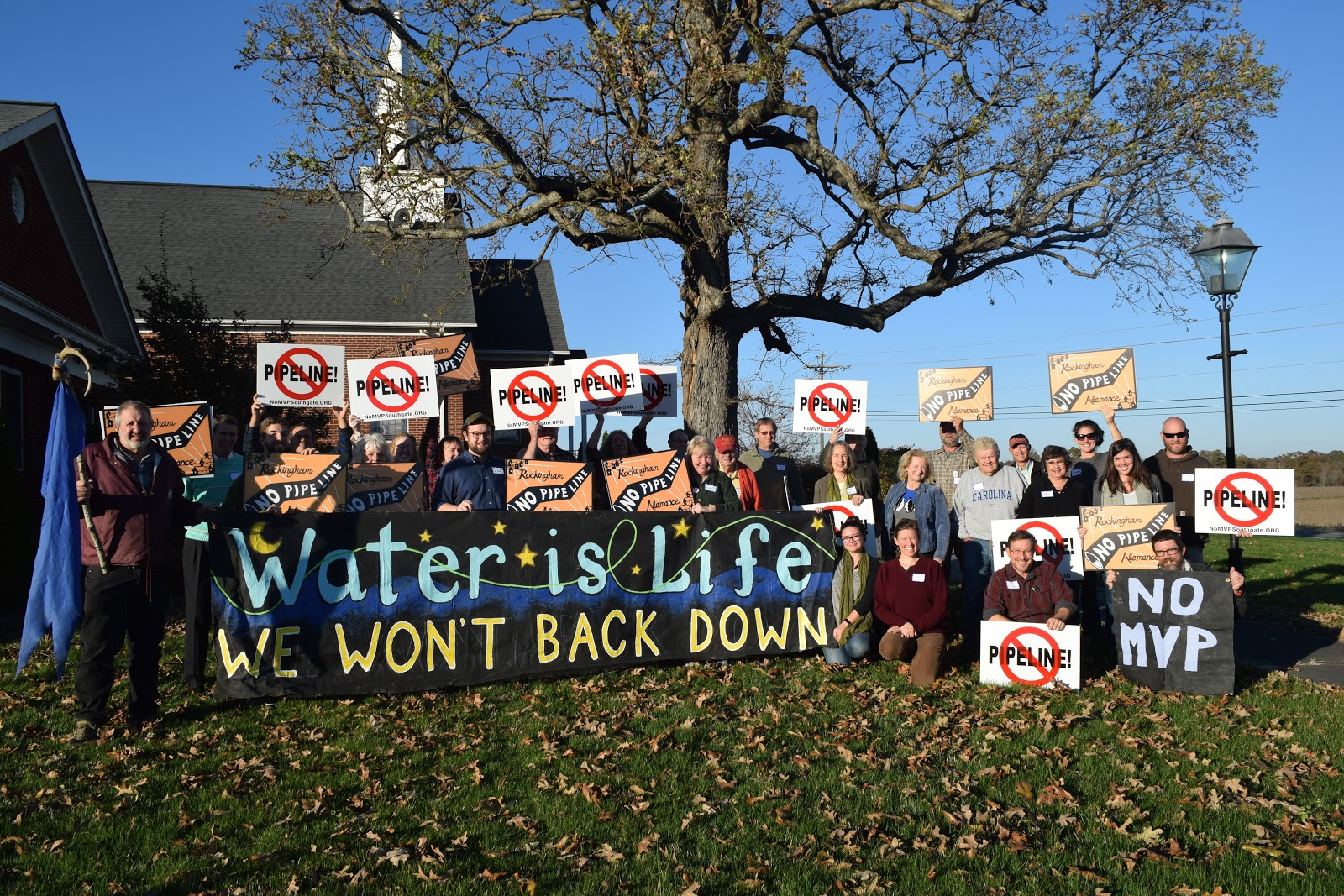
MVP — No Way Because Water Is Life
From an Article by Mary B. Powers, Engineering News Record, July 13, 2021
Mountain Valley natural gas pipeline still needs key Corps of Engineers water-crossing impact permit to complete its last project section.
The U.S. Environmental Protection Agency wants the U.S. Army Corps of Engineers to deny a key construction permit for water crossings to the $6.2-billion Mountain Valley Pipeline unless modifications and special conditions are incorporated into the project.
In a May 27 letter only released publicly this month, Jeffrey Lapp, EPA’s wetlands branch chief in Philadelphia, said the agency had identified a number of “substantial concerns” with the 303-mile natural gas pipeline from West Virginia to Virginia, now nearly 92% complete, including whether “all feasible avoidance and minimization measures have been undertaken.”
The letter was released in response to a Freedom of Information Act request by environmental law firm Appalachian Mountain Advocates of Lewisburg, West Virginia.
The project previously held a Corps Nationwide-12 permit that allowed project-wide water crossings without individual impact review, but it was withdrawn last year after a federal court struck down the blanket permits. Mountain Valley developers are instead pursuing an “individual permit” that incorporates review of hundreds of water body crossings.
The project would permanently impact 1,198 linear ft of streams and temporarily affect 38,312 linear ft, said EPA. It would permanently affect 0.5 acres of wetlands, temporarily affect 13.92 acres, and convert 3.7 acres of forested and scrub-shrub wetlands to emergent wetlands, the agency said.
“While EPA recognizes the proposed project’s purpose and need for providing transmission of natural gas, the extent of anticipated impacts, notably the large amount of temporary discharges from the proposal to the aquatic resources, warrants careful review,” Lapp said. The proposed discharges have implications to downstream waters, he said.
Mountain Valley is currently reviewing EPA’s comments and plans to provide responses to the Corps that will address agency recommendations. “We are confident that the current application with our additional responses will satisfy EPA’s recommendations,” Todd Normane, deputy general counsel for the project and its operator EMQ Gathering Opco, said in a July 12 letter to the Corps district office in Huntington, WV. Normane said EPA’s comment was in response to the Corps process for reviewing permit applications, which Mountain Valley submitted in February.
The pipeline also has other permits to acquire, including an approval by the Federal Energy Regulatory Commission to tunnel under certain streams. Overland crossings were approved in 2017, but EMQ Gathering Opco’s decision to bore under certain streams required a new authorization. FERC’s public comment period is open until early August.
Virginia and West Virginia have until later this year to certify the project under Clean Water Act Section 401. West Virginia has until Nov. 29 and Virginia has until Dec. 31 to either grant or waive certification. If either state denies certification, the Corps will deny the applications. If certification is waived, the Corps will issue the permit, Melanie Davenport, a Corps official in Norfolk district said in a June 28 letter to Virginia regulators.
Mountain Velley originally was scheduled for completion by the end of 2018 at a cost of just $3.5 billion. The project’s targeted summer 2022 in-service date is based on receiving all water crossing approvals and the lifting of a remaining exclusion zone around the Jefferson National Forest by the end of 2021.
Mountain Valley released on July 12 its plan to acquire an estimated $150 million in carbon offsets for greenhouse gas emissions for 10 years of the project’s operation. Emissions include carbon dioxide from engines used to drive compressor stations, methane released during operation and maintenance and carbon dioxide resulting from generation of power it purchases for O&M.
The cornerstone of the plan is a coal mine methane abatement project in Virginia that would capture methane from the mine and convert it to carbon dioxide and water vapor, the pipeline operators said. Critics wondered, however, how it is “greener” to convert methane to CO2, another greenhouse gas.
Mountain Valley also is pursuing greenhouse gas abatement projects in West Virginia including addressing abandoned and orphaned gas wells, the company said. Owners expect Mountain Valley to be one of the first large scale natural gas pipelines to be carbon neutral for its operation emissions. Environmentalists are concerned that the plan does not address greenhouse gas emissions from the natural gas as fuel that the pipeline transports.
>>>>>>……………………>>>>>>……………………>>>>>>
See also: Giles County Seismic Zone should be a no-pipeline zone
Letter to Roanoke Times by John Costain, Virginia Tech, February 8, 2015
Virginia has two active and well-defined zones of earthquake activity.
One is in central Virginia and is called the Central Virginia Seismic Zone (CVSZ). The other is in Giles County and is called the Giles County Seismic Zone (GCSZ). Both zones have been defined and recognized for decades.
Two of the largest earthquakes in Virginia’s history occurred in 1875 in the CVSZ and in 1897 in the GCSZ (Bollinger and Hopper, 1971, “Virginia’s two largest earthquakes — December 22, 1875 and May 31, 1897,” Bulletin of the Seismological Society of America, v. 61, p. 1033-1039).
The proposed Mountain Valley Pipeline appears to go right through the Giles County Seismic Zone. Although we have recently (Aug. 23, 2011) witnessed a successful automatic shutdown of the North Anna nuclear power plant in the Central Virginia Seismic Zone after a magnitude 5.7 earthquake, it is not clear that similar engineering safeguards would be effective or even possible for the geometry of a natural gas pipeline.
Perhaps it is not a good idea to be too complacent or overconfident in our abilities to outsmart Mother Nature.
>>> John K. Costain, Professor Emeritus of Geophysics, Virginia Tech, Blacksburg, VA
